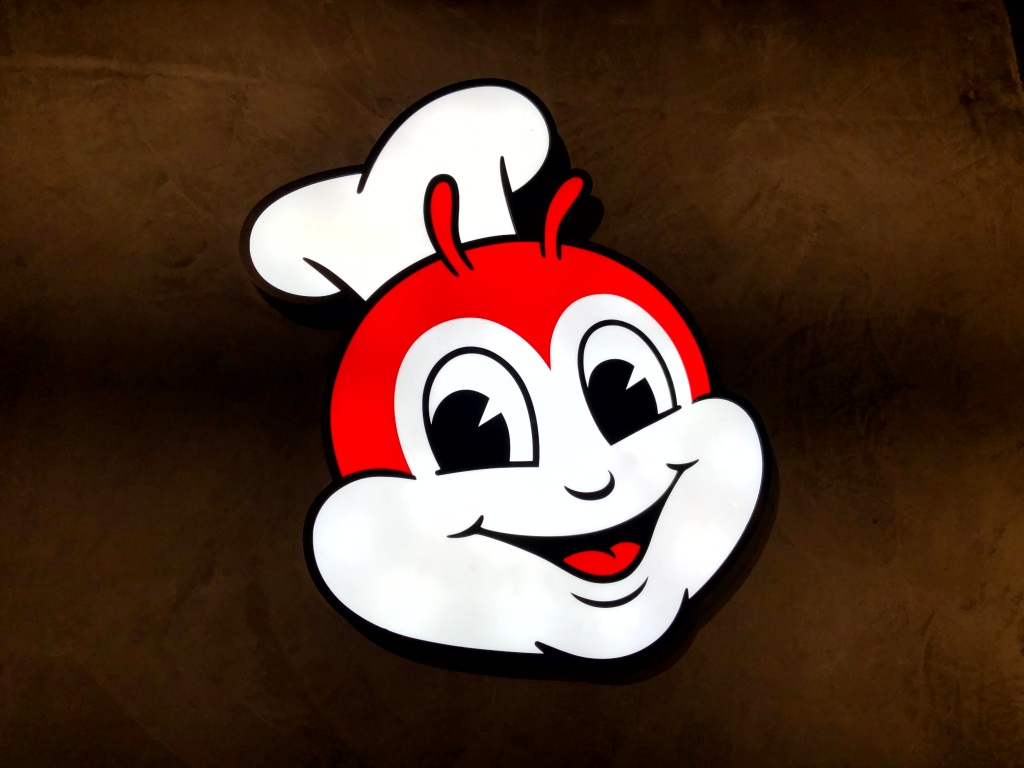Stamford Mercury
Lincolnshire
Friday 24 June 1910
LITTLE NEW ZEALAND
Canada, Australia, and Tasmania have lately been much talked of, and written up, and justly so, for each has its virtues and possesses inducements and advantages for those who desire to better their position by emigrating to a new country.
After a residence in New Zealand of half a century, I claim to know a little about its past and present. I have lived in various parts of that fair and beautiful clime, and endured the hardships of the early colonist, when roads were unmade, communications by sea were primitive, and comfort was out of the question on the schooner or cutter which traded to the various districts, which could only be reached the slow sailer of forty year ago.
Of course travelling by steamer and rail is now the order of the day, as the country has been opened up and settled upon by the right class of people from various parts of the world - English, Scotch, Irish, Welsh, Germans, Poles, the British predominating however.
Those pioneers were composed of the right material: men and women prepared to undergo hardships and disappointments, but keeping a brave heart amidst many discouraging circumstances peculiar to any new country, yet plodding on as many did for years in some cases, before they had made for themselves the smiling homesteads, of which they pictured themselves the one day to be the happy possessors of.
Well, that day came to all who were prepared to "labour and to wait."
The farmer in New Zealand is the backbone to the Dominion, as indeed the farmer is to every country. New Zealand possesses railway communication with nearly every town in tne two islands, north and south, and the road compare favourably with much older countries.
Industries and factories in the large towns are ever on the increase, and there is present no scarcity of labour for those departments of industry. All them are capable of increasing the output, and as the Dominion increases in population there will be an additional increase in the profits to all concerned.
New Zealand, like other oountries, has, and still suffers from, too much legislation of a Socialistic character, which irritates the employer of labour, both as regards the factories in towns, as well as such industries as frozen mutton and beef and the butter and cheese factories, all of which have grown to very large proportions recently and are still growing.
The great want in New Zealand at the present is more population and more people with capital. The farmer needs capital to purchase or lease the land he needs for farming operations, and the wherewithal for house, out-buildings, and stock.
Money can be had on mortgage and on short loans on note of hand, and in the course of a year or two the industrious farmer who is determined to succeed will be rewarded with a good return as the result of his labours.
I am not a farmer, but am intimate and have had dealings with men whose word can be relied upon, and there is no better climate —mild and healthy - under the sun.
I can conscientiously advise any one who desires to better their position in the farming line to decide in favour of New Zealand.
I will conclude by giving facts and figures about the two or three greatest of our industries for the benefit of your readers and m proof of my statements.
At first sight it will appear marvellous to ordinary people to read of exporting butter by the ton, instead of, as in the old days of my boyhood in England (for I was born in a village and lived also with my parents), quoting and pricing butter by the pound. The butter industry has now reached such large proportions that it has spread nearly all over our Dominion, and from following figures I shall prove that it is now one of the best paying industries in New Zealand.
In many districts the milking season, which lasts about eight months out of the twelve, has been one to attract outsiders who are willing to give their labour in exchange for a share in the profits of the concern, and this system is growing in favour, as is seen in the number of applicants to go into the profit sharing, and both parties have come out most handsomely on the right of the ledger.
In seme cases family of four or six milks on an average 50 cows a month, each cow producing £1 per month profit: this is the case of one of the small farmers residing in this district.
In the month of February last, the total export of butter for the month was the value of £277,651: was also exported the same month cheese to the value of £174,069, beef of the value £56,010, mutton and lamb £360,000, not so bad for a small population of one million people.
One of the Dairy Companies in giving its shareholders an account of the business done during the year, states that its turnover during the year approximated a quarter of a million sterling.
Whilst the quantity of butter manufactured was nearly 2000 tons, the increase on both totals being about 20 per cent, as compared with those of the previous year, the money paid out to milk suppliers, who practically are the whole shareholders, was £240,000.
In June last one district—Cambridge, Waikato, Auckland - was looking forward to having another year of great prosperity, as is shown by the following paragraph, taken from the New Zealand Herald:
"The butter industry is proving an extremely profitable one to country settlers, and it is noticeable that dairymen everywhere in the Dominion are extending their operations as circumstances permit.
The industry has been developing slowly, but solidly in this district, and the limit is not by any means reached yet.
During the season now practically ended, the product of between 4,000 and 5,000 cows has been supplied to the Cambridge Co-operative Dairy Company, and it is stated on reliable authority that by reason of the influx of new settlors and additions to existing herds, another 1,000 cows will added next season, or roughly increase of 20 per cent., which will represent an additional revenue to the district about £8,000.
The company will pay out to suppliers next month between £4,000 and £5,000, about £3,500 of which is the annual bonus. It is wonderful to think what a fertile district, occupied by only a handful people, will produce."
Hon. T. McKenzie, Minister of Agriculture, said at Hamilton, July 6th, "The dairy industry will soon be worth three million pounds. Output this vear £1,600,000. Cheese approaching £1,000 000."
And while the greater proportion of butter made in the Dominion is exported, care is taken not to leave ourselves short for the winter supply. In the beginning of winter there was stored in Auckland 13,700 boxes or 342 tons, and this would be added to from time to time, as in some districts the factories are kept going all the winter. The prices received by the factories from the butter jobbers range from 10½ d to 10¾ d per lb.
One more illustration and I have done. The Thames Valley Dairy Co., Ltd., had a very successful year, and are going to increase their plant considerably; their output for the year was 408 tons; 177 tons was exported and the remainder was disposed locally. The turnover for the year was £51,170, the bonus to shareholders, numbering 204, was per cent, and a bonus per share of 10s., this after carrying over £1000 to the reserve fund and making allowances for depreciation to plant, bad debts, etc.
This company now purpose spending over £2,000 on additions to building and necessary plant.
The profits for the year amounted to £47,512 18s. 7d. This company only started operations seven years ago.
M. Whitehead.
Month: February 2024
The clues to a great story
Just watched American filmmaker Andrew Stanton’s TED Talk on the clues to a great story.
Incisive and worth a watch. Here are his main points:
- Stories should make a promise to the reader: this story will lead somewhere that is worth your time.
- Make the reader work for their reward – we are born problem solvers who are compelled to deduce – the well-organised absence of information in a story is designed to draw the audience/reader in.
- Structure the story to make the audience put things together – elements the storyteller provides and the order you place them in are crucial to engage the audience and hold their attention.
- Make the reader care – draw them into the story and encourage them to invest in the narrative by making them put things together to hold their attention
- All well-drawn characters should have spine which drives their choices – this acts as their motor, propelling them in positive or negative directions according to their temperament. This is the engine that drives them and the story.
- Change is fundamental to telling a good story – avoid statics scenarios. Drama is built on dynamism and change.
- “Drama is anticipation mingled with uncertainty” – playwright William Archer – succinctly defines the core of fiction.
- make the reader want to know what happens next
- create tensions and construct anticipation in the story to hold the reader’s attention
- the story should build short and long-term tensions to make the reader want to know how it will all conclude in the end
- constructed honest conflicts with truth that create doubt about what the outcome might be – will the main character find what he is looking for ? Will it all turn out OK in the end ?
- Liking your main character is important – the reader will want to follow the story of a character they like and want to see overcome and succeed.
- find out what drives a character and describe the story of how they take the wheel and steer the story in their own direction
- stories should have an overarching theme – a grand lineage which underpins the narrative, a guideline, a constant, a roadmap. A strong theme always runs through a good story.
- Can the storyteller evoke wonder in your story which promotes a sense of affirmation of being alive in the reader?
- use what you know and draw from it – use well-chosen words that evoke sound, sight, taste, touch, and smell to draw in the reader.
Banana pancakes
made simple, 3 ingredient pancakes for breakfast this morning.
- ripe banana – mashed
- 2 tablespoons self-raising flour
- 1 medium egg
mix, leave to stand for a few minutes and cook on medium heat in a little oil.
Brilliantly simple. Fantastically tasty.
Had them with natural yoghurt and a sliced apple.
Jollibee

Love Jollibee.
Crispy, juicy, perfectly fried chicken served with a side of steamed rice and their signature gravy.
Fast food heaven.






It’s simply the best fried chicken I have ever had.
Jollibee chicken-joy is beautifully crispy on the outside and deliciously succulent on the inside. You get a satisfying peppery crunch followed by hot, tender chicken. It’s not heavy and greasy, like in some fried chicken places.
Their signature gravy mixes classic Filipino flavours. Bay leaf and pepper combine in a rich, aromatic sauce with a herby, almost nutty flavour. It’s unique and really compliments the chicken.
Simple steamed rice is the perfect accompaniment. Rice is so much nicer than fries, which go cold almost immediately.
Had to finish it all off with one of Jollibee’s iconic peach mango pies. You crack through a sweet, crunchy pastry crust and bite into the hot peach-mango filling. The perfect combination – hot, sweet, fruity goodness.
Melbourne – the early days. An old colonist’s memories.
Ovens and Murray Advertiser
Saturday, 30 March 1901
THE EARLY DAYS.
An old colonist's memories.
An elderly lady, who was born in Hobart in April, 1839. and arrived in Melbourne in the following December, recalls some of her early recollections as under : —
I can recall wnen there was neither coal nor gas in Melbourne, when they had to bring the water in carts from a distance of five miles up the Yarra ; when there were no -roads, no footpaths, no gaol, no hospital, not even a Treasury. I can remember. too, when the foundation stone of the first Prince's Bridge was laid, and a bullock was roasted whole on the site of the Elephant and Castle, opposite to the Melbourne Hospital. I can also remember when the first schooner was built and launched on the south side of the Yarra.
My father was a member of the first Temperance Band in the city, under the baton of Mr. Tickell, and my mother and he were present at the first execution that took place in Melbourne, when three men and a negro were hanged in the open, just where the Melbourne Gaol stands now.
My mother then lived in a wattle and dab hut close to Mrs. Bateman's cottage on the Hill. Messrs. Webb and Slattery were the first builders, and the Rev. Father Terry, of St. Francis's, was the first priest. The first pottery was at Burnley, and the first lawyers I can remember were Mr. Stephen and Mr. Redmond Barry. The blacks used to come in and cut wood for us for a shin of beef, and gave very little trouble.
I can remember, too, the first riot in the city, outside an hotel at the corner of Little Bourke and Swanston streets, when windows were broken and flags torndown, and Father Terry came down and dispersed. the mob.
I have also a recollection of Governor Latrobe and his house near Jolimont, and Murphy's Brewery in Little Collins-street, where as a little girl I used to buy yeast.
My father built the first hotel in St. Kilda— the Royal— afterwards Mooney's. Implanted also in my memory are the names of Mr. Heales, coachbuilder, in Exhibition-street— afterwards a member of Parliament, and Drs. Howill, Wilkie and Black.
I can remember, too, the first lock-up in Spencer street, for I got lost when a child, and I was taken there, while the bellman was I proclaiming my loss through the town.
My mother and father, the late Catherine and Samuel Morley, were married in Hobart, and at the time of their death - four years ago - they had thirteen children, thirty-nine grand-children, and forty-four great-grandchildren.
Wharf Brewery, Melbourne. 1858

The Australasian
Saturday, 2 May 1936
PASTORAL PIONEERS
By R.V.B. and A.S.K.
JAMES MURPHY
ARRIVING at Port Phillip with his brother John in 1839, James Murphy made arrangements to go straight into the country in search of a pastoral run, but John persuaded him to remain in Melbourne, for a time, and to look carefully into the risks of squatting ventures before risking his capital.
John started business as a brewer in Flinders street west. James accepted a clerkship with the Port Phillip Auction Company, and in 1844 he also set up as a brewer, opening the Wharf Brewery.
For about a year the brothers were competitors, but in 1845 they joined forces, and carried on their brewery business in Little Flinders street west. James, however, still cherished a desire to take up pastoral country. He made several trips inland, and in 1848 he acquired Konagadarra from George Newson.
Konagadarra, on the Saltwater, turned out to be a valuable property, but Murphy parted with it to W. J. T. Clarke before he realised its true worth. Afterwards he went into partnership with W. R. Looker. Murphy and Looker then bought Caragcarag, Colbinabbin, Corop, Tongala, and Lower Moira from the widow of Edward Curr, the father of separation.
They also added Stewarts Plains, a subdivision of Boramboot, to their holding. Stewarts Plains was taken over from John Clarke.
The Murphy-Looker pastoral partnership flourished for a few years, but in November, 1854, it was decided to dissolve the partnership. Murphy took over all the runs. Subsequently he sold Caragcarag, Colbinabbin, Corop, and Stewarts Plains to John Winter, and Tongala to Patrick O'Dea. Lower Moira he retained till 1857, when he transferred this property to Frederick Bury and Peter Cheyne.
In 1853 James Murphy was elected to the Legislative Council, and he remained a member of the council till the advent of Constitutional Government in 1856.
[This series of articles was begun in "The Argus" on August 14, 1934, and was transferred to "The Australasian" on October 6, 1934.]
Mount Alexander Mail
Thursday, 27 April 1865
THE WHARF BREWERY, situated on Flinders street, west, lately in the occupation of Messrs Jno. Bellman and Co., having a frontage to Flinders street and Flinders-lane, and consisting of nearly one acre of ground, on which is built a substantial brewery, fitted up with engines, coolers, mash tubs, vats, and every requisite for the trade, together with malt-houses, stores, stables, &c. This is one of the most complete breweries in the colony, and adapted for carrying on an extensive business on an
economic scale.
Apply to F. J. M'Dougal, 100 Bourke-street, west Melbourne
Australian Town and Country Journal
Saturday 22 November 1879
A Leading Industry
I don't think any business has made such strides in Australia as the brewing of beer; and it is matter of fact that in all the colonies, brewers have almost without exeption made fortunes.
I'm old colonist enough to remember when Murphy's brewery was the only one in Victoria; and many a year after that, Tooth's stood almost, if not quite, alone here; but now every town has its brewery, and all the proprietors do well.
The tase for colonial ale and porter was developed in Victoria more extensively and very much earlier than here; for the people of New South Wales continued in their allegiance to "British Beer " long after "Colonial" was the principal malt liquor of our southern neighbours; and the ale of Castlemaine became an extensive article of commerce among us, almost before Sydney had more than a second brewery of her own.
Then, there was the Hobart Town ale, for which several agencies were established here; and long before that - two or three and twenty years ago - the names of Elliott Brothers, and Glasgow and Thunder, two prosperous brewery firms, were household words at Bendigo.
There had been a brewery years ago on Elizabeth-street; but, before my acquaintance with Sydney, it was in ruins; and Tooth and Co. reigned supreme. Now there are five or six breweries, and all driving a roaring trade; so that, clearly, colonial ale must have taken a hold on the Sydney palate.
Going down Castlereagh-street the other day I turned into Henfrey and Co's brewery, to see Mr. Herald, a partner in the firm, on some business; and I was glad of a look round, as I had not been there since long before the late Mr. Henfrey's death, when it was a large soda water factory, but small as a porter brewery.
And what a change to be sure, a few years have made, for now there is an immense business doing, not only in aerated waters and cordials, but in bottled porter, which is brewed twice a week, to the extent of about 600 dozon each time, all of which is consumed in the hotels.
I tasted some that had been in bottle for three months, and thought it very good - sharp and nice, without being as heavy as English.
No doubt the excellence of the porter arises in a great measure from the brewer being one of the partners.
The soda water machinery is extensive, and fitted with all the latest improvements. One Hayward-Tyler double action beam machine, when worked at both ends, turns out 600 dozen in the day time; and it can be worked by four bottling racks, when it bottles double the number of half bottles, that are now coming so generally into use.
I was told there is only one other similar machine in New South Wales. Another Hayward-Tyler machine, a single action one, is there, to which is fitted a bottling rack made by J. Stevens, of Sydney. This machine, which supplies two bottling racks, will bottle off 700 dozen small, or 500 large in tho day.
Having had the working of these machines explained to me, we next visited the cellars, where are stored the cordials and wines, made in the establishment, together with the strong syrups that form the foundation of all these; and here are to be found all conceivable descriptions of cordials, and balms, and syrups, and liqueurs, that ever were made in a colonial manufactory.
The great secret appears to be in the art of boiling the sugar, so as to make a clear and bright syrup; and in this preliminary operation, fifty pounds worth of sugar is required to fill the simple syrup tank once every week.
There are all sorts of conveniences for loading the carts; and six good harness horses are employed in the business.
Before leaving I was shown a handsome trophy which the firm were going to exhibit in the Garden Palace; but as this was not in show order I must leave it to speak for itself in its representative capacity.
What struck me especially was the scrupulous cleanliness of everything in the place, which is certainly remarkable, when it is considered that all sorts of sticky goods aro continually in use; and that as many as forty hands are employed.
The business seems to go on with the regularity of clockwork.
The global economy

Merry Christmas from your lawyer

The Eisenhower box

Critical Thinking
